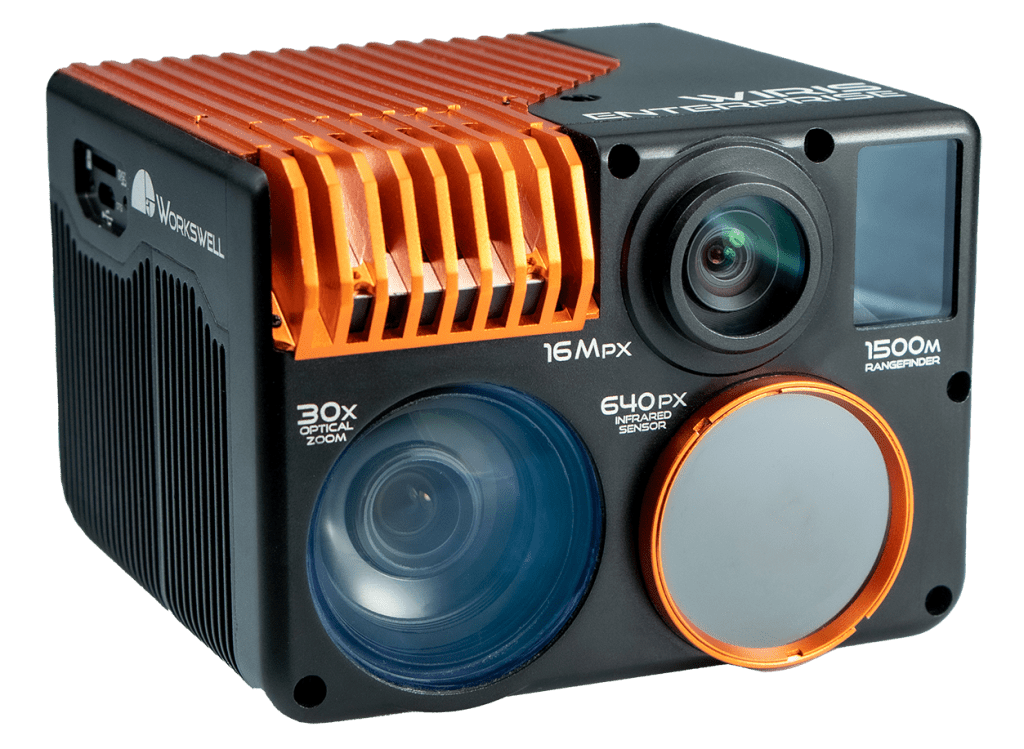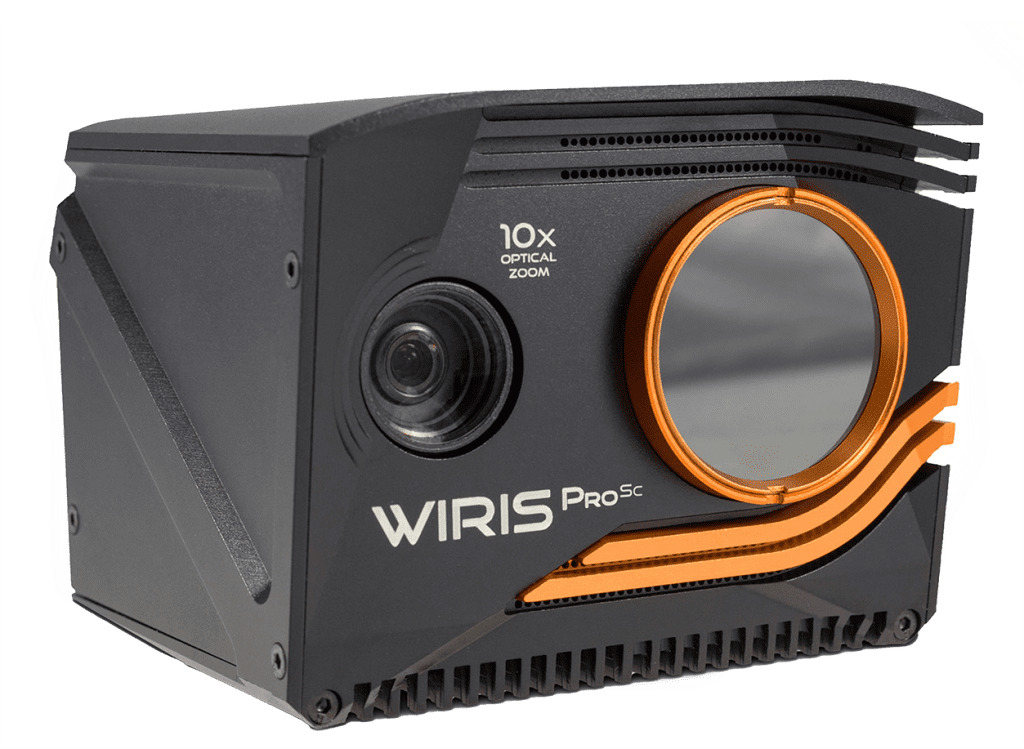Thermodiagnostics of Flat Roofs
Flat roofs were originally built in areas with low rainfall. For example, they can be found in the architecture of Egypt, Babylon and Mesopotamia. They appeared in Central Europe with the discovery of asphalt strip processing at the end of the 18th century. In the modern era, the quality of insulation against atmospheric conditions made drastic improvements, and flat roofs appeared on factory halls and earned acceptance within architecture.
Today, they are a standard component of a wide variety of buildings. Flat roofs conserve material, are less labor intensive, and facilitate variable roofing layouts, as well as the potential use of roof areas. However, flat roofs also have disadvantages. The design of the roof layer composition is a complex matter, as is the structure’s thermal technical evaluation, and rigorous principles must be adhered to during implementation. Thermal imaging systems that can be mounted on drones offer the perfect tool to evaluate the technical condition of flat roofs. Thermodiagnostics of Flat Roofs is powerfull tool to make it easy detectible.
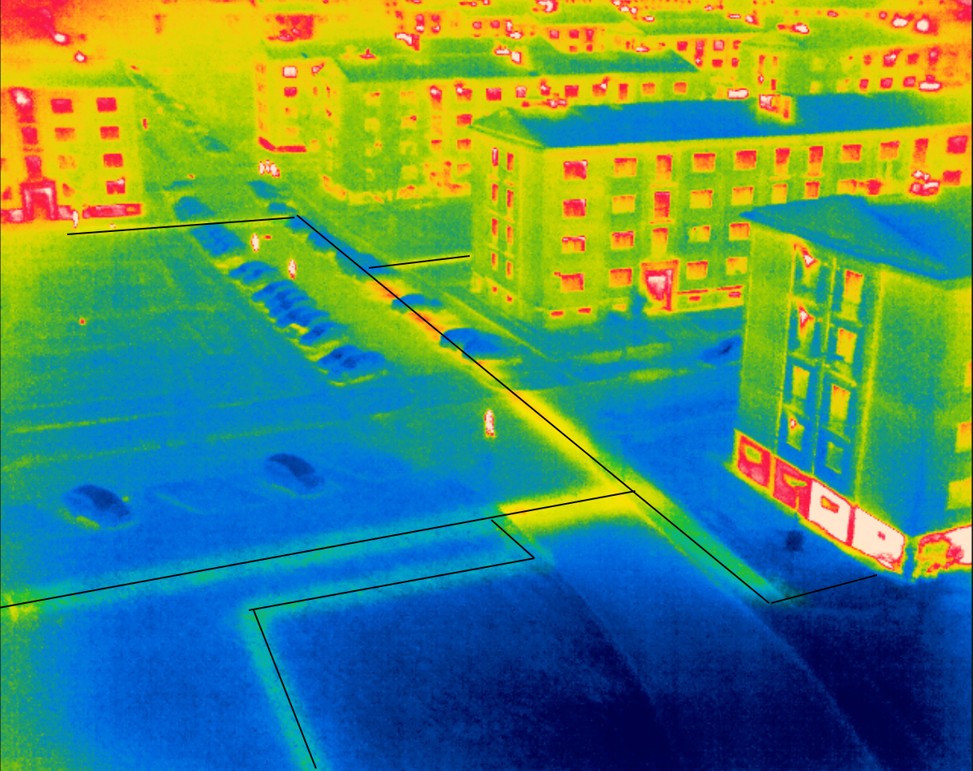
Why Flat Roofs Need Fixing?
Flat roofs suffer from a wide variety of defects, which may arise due to a number of reasons. For example, the roof’s point of contact with the attic may be a source of trouble, or water might penetrate through the cover.
Problems with leaks can occur due to unprofessional installation, neglected maintenance, or degradation caused by insufficient protection of the surface layers against climatic influences. Of course, even the best roof has a limited service life. In most cases, flat roofs deteriorate after excessive exposure to wind, which causes dynamic shock – a permanent oscillating movement that lifts insufficiently secured parts.
Prevention is everything
Dynamic shock also causes many leaks. Water, which collects on damaged roofs, reduces the durability of roof clad. As it flows between the gaps of the non-absorptive heat-insulating layer through to waterproof insulation, it takes on a very low temperature. As a result, the temperature of the waterproof insulation decreases, which can cause condensation on the roof cladding. In extreme cases, water can even overload the load-bearing construction of the roof cladding.
Over a long period of time, leaks under the roof’s surface will destroy its foundation. The destruction of a roof’s foundation can only be prevented by timely discovery of the problem. Unfortunately, detailed roof surveys are often difficult to execute – factory roofs, for example, can be very large, and even flat roofs have a high degree of variability. Surveys are time-consuming and physically demanding, so they are limited to obviously high-risk areas. If there is visible evidence of a defect, it is theoretically possible to identify the cause. Yet in most cases, leaks do not leave a direct trail, so the upper part of the roof must be inspected in painstaking detail.
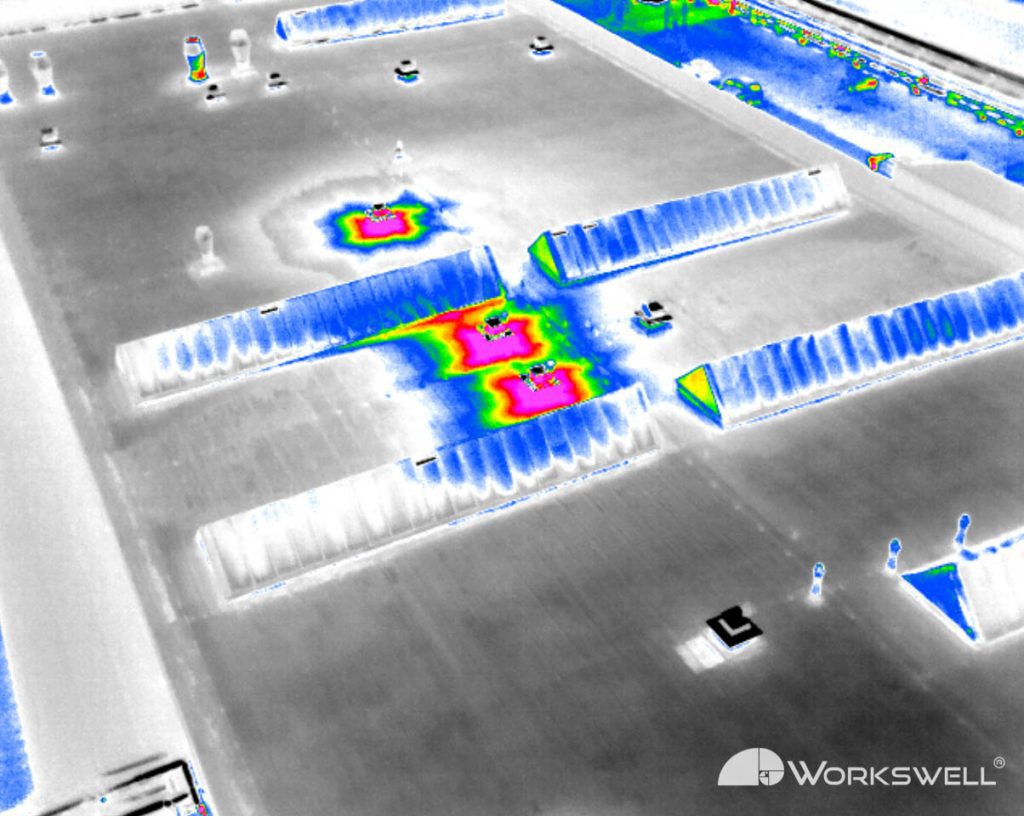
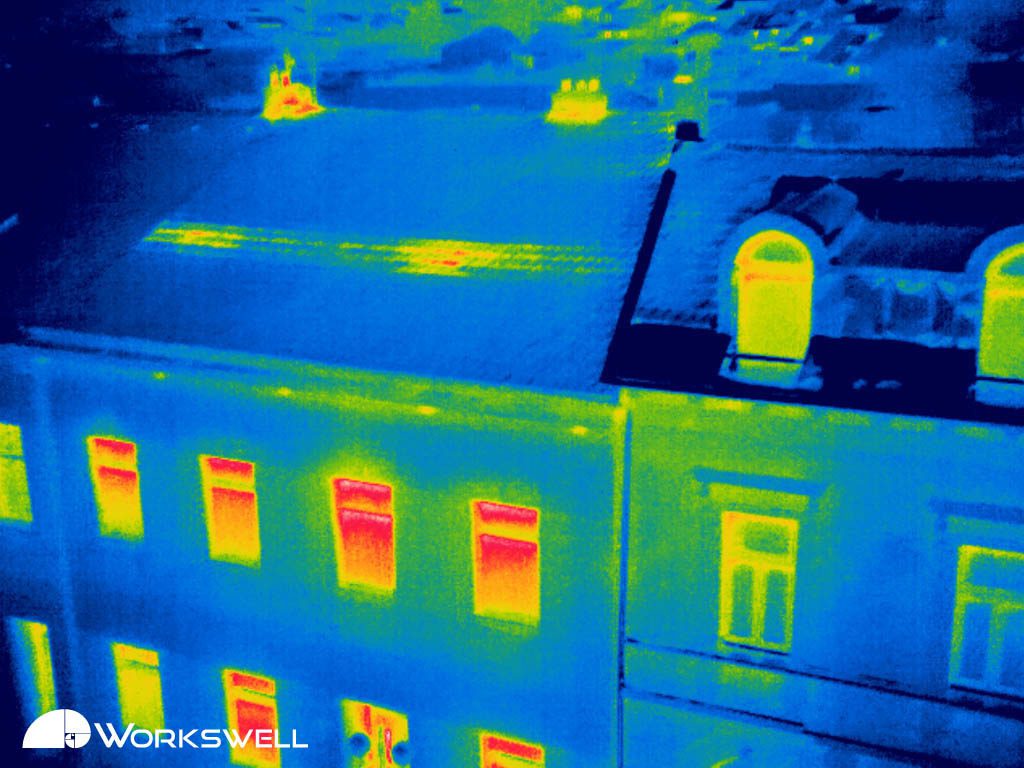
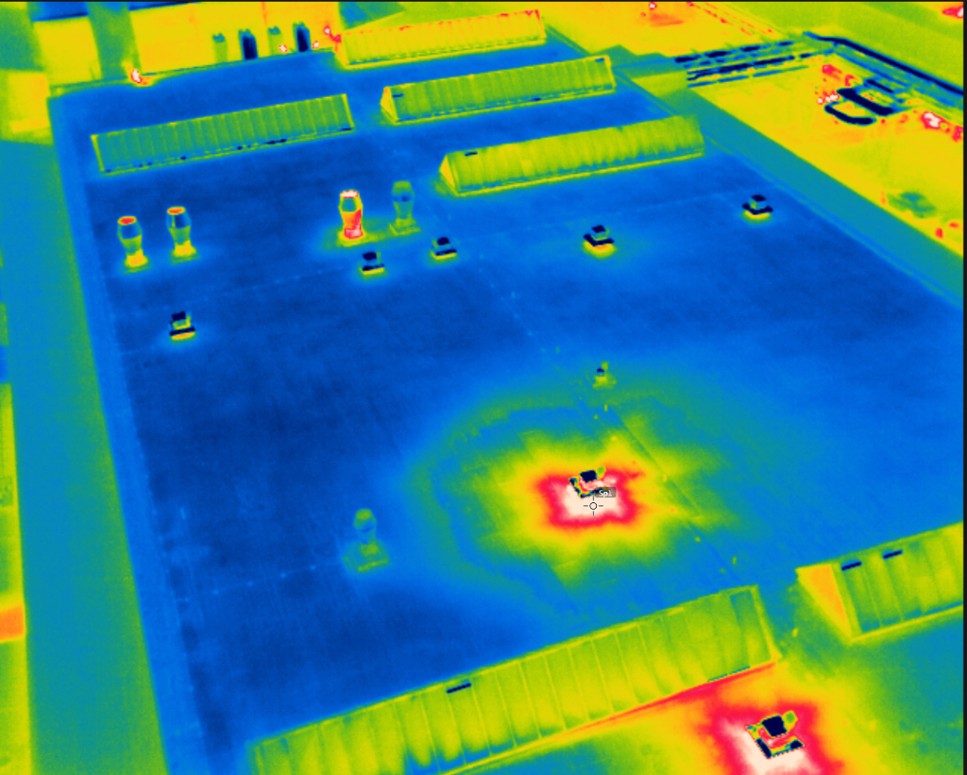
Thermal Cameras: The Ultimate Roof Inspectors
There is a fast and simple way to resolve the problem posed by the need for detailed flat roof inspections. This solution is a thermal imaging system, or thermal camera. Due to the heat difference between a dry roof, and a roof that has been penetrated by moisture, a thermal camera can fully diagnose an emerging defect. Depending on the roof’s construction, it can even be possible to localize and define the scope of the defect by seeing how large of an area is affected by moisture.
By identifying these issues early, it is possible to address them before they become major problems. This can save building owners money by preventing costly repairs and improving energy efficiency.
It is important to note that thermodiagnostics of flat roofs is not a standalone solution for diagnosing roofing issues. It should be used in conjunction with other diagnostic techniques, such as visual inspections, moisture meters, and core samples, to get a complete understanding of the roof’s condition.
What about thermal bridges?
The physics behind the thermal image inspection of moisture defects is based on the fact that the dry part of the roof cools and heats more slowly than the wet part. Thermal image inspection using a thermal camera during or after sunset, when the roof has just been thoroughly heated, aids in the identification of moist areas because the dry parts of the roof cool slower than the wet places, which have a higher thermal capacity.
During the warm season, the thermal camera can also identify areas that are poorly insulated (where what are known as “thermal bridges” have occurred), and where there are thermal escapes. These areas are detectable by camera because they are warmer than the surrounding parts of the roof.
Take to the Skies
Even an excellent thermal camera has its limits when faced with the expanse of a large roof. A handheld device, even an extraordinarily sensitive one, simply can't cover every corner of a massive complex. Enter the UAV, or drone. In the drone-mounted thermal camera, sensitivity finds its complement in a versatile aircraft. Rather than climb up ladders and skirt unstable surfaces, inspectors can stay on the ground while an airborne patrol makes the rounds up above. Live camera feeds offer an immediate overview of roof condition, and personal inspection is reserved for defects that are recorded by the device.
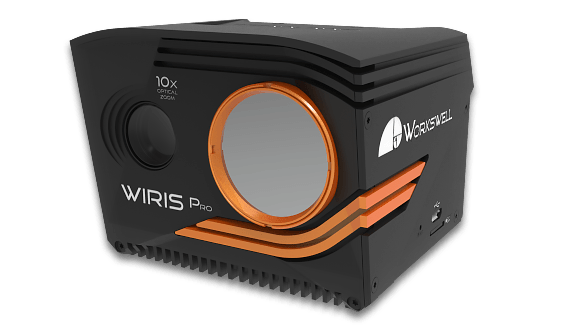
The Workswell WIRIS
Workswell developed the Workswell WIRIS system to capitalize on the opportunity offered by this innovative pairing. The WIRIS combines two camera systems – a visible spectrum camera to enable the inspection of visible defects, and a thermal camera that leverages heat sensitivity to uncover non-visible ones. The WIRIS servicing software enables the operator to remotely switch camera regimes, to record radiometric videos, and to capture static images in both the visible and infra-red spectrum. The operator sees the objects under the drone in real time, and they can also analyze recordings to identify damaged areas.
Moreover, the Workswell WIRIS thermal camera, unlike similar systems, enables manual setting for a range of temperatures mid-flight. The system’s settings can be easily changed to achieve the precise thermal sensitivity range needed to identify minor moisture defects and localise defects. Since traditional photo documentation is required to localise a defect, the Workswell WIRIS video camera can produce a traditional photo. Moreover, the system can be fitted with a GPS sensor, so it can store information about the position of the drone when taking an image.
How does it help?
The WIRIS measures temperature at the central point, as well as in the local minimum and maximum. Minima and maxima are localised using a blue (minimum) and red (maximum) cross. This function can also be used to navigate drones because the system automatically shows where the largest potential problem is located.
All records produced by WIRIS are fully radiometric, including videos. After the end of each flight, WIRIS records can be evaluated using the Workswell CorePlayer software to produce a measurement report on the measurements recorded with the exact location of the problems. For this reason, a full visible spectrum photo is produced, as well as thermal images, or thermograms, to help distinguish what the photo is showing.
Individual photos from the radiometric video can be taken and used as separate thermograms to analyse key problems.
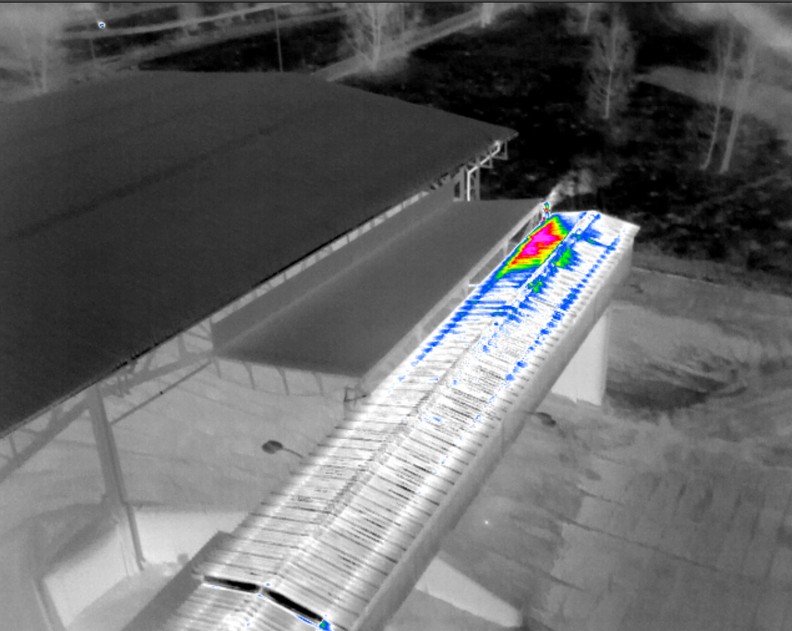
Conclusion
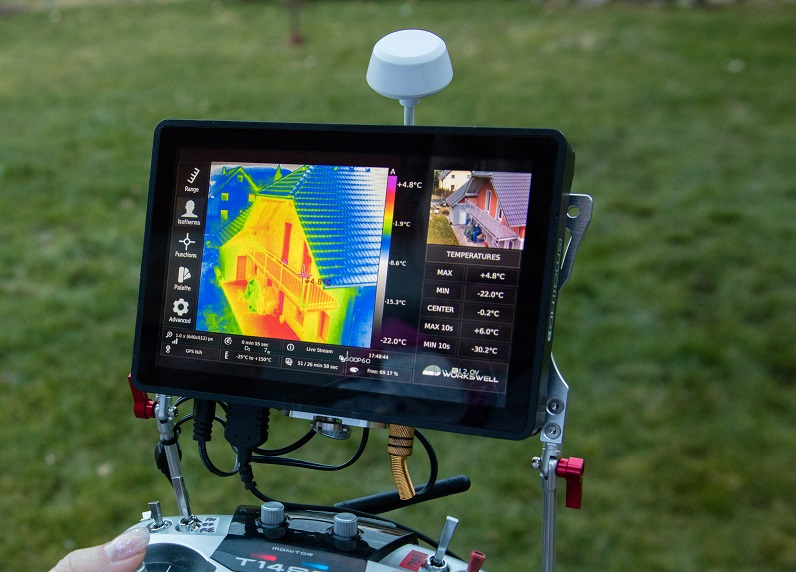
The combination of a visual and thermographed inspection using drones can discover hidden defects that, if left unresolved, will become hazardous and/or financially demanding. Small leaks can be seen on the thermogram so the roof can be preemptively maintained at a fraction of the cost of a major repair in the case of overload and collapse. Moreover, the WIRIS system is universal and can be used in other industrial applications when checking construction leaks, or when inspecting the quality of piping and identifying defects.
In our work with the WIRIS, we found that in most cases, thermal insulation is incorrectly fitted, and thermal bridges are of such significance that its efficiency is reduced by one third. The most frequent reason for these problems is that thermal insulation is not self-contained, and a series of large gaps lies between thermal insulation layers. Try the WIRIS out yourself, and see what defects you uncover.

